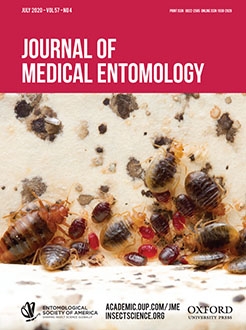The carboxamide N, N-di-ethyl-meta-toluamide (DEET) is the most effective and widely used insect repellent today. However, drawbacks concerning the efficacy and the safety of the repellent have led to efforts to design new classes of insect repellents.Through quantitative structure–activity relationships, chemists have discovered two chemical groups of novel repellents: the acylpiperidines and the carboxamides, with the acylpiperidines generally more potent in biological assays. Although the exact mechanism of action of DEET and other repellents has not yet been thoroughly elucidated, previous research shows that the activity of insect odorant receptors are inhibited in the presence of repellents. The present electrophysiological study employs two-electrode voltage clamp with Xenopus laevis oocytes expressing AgOR2/AgOrco and AgOR8/AgOrco receptors to assess the effects of the novel repellents on Anopheles gambiae Giles (Insecta: Diptera: Culicidae) mosquito odorant receptors. The novel acylpiperidines and carboxamides reversibly inhibited (12–91%) odorant-evoked currents from both AgOR2/AgOrco and AgOR8/AgOrco receptors in a dose-dependent manner at all tested concentrations (30 µM to 1 mM). Furthermore, all the novel agents were more potent inhibitors of the receptors than DEET, with the acylpiperidines producing on average greater inhibition than the carboxamides. Interestingly, there was a correlation (r2 = 0.72) between the percentage inhibition of AgOR2/AgOrco receptor currents and protection times of the acylpiperidines. Our results add to existing evidence that the repellency of a compound is linked to its ability to disrupt the insect olfactory system and that the acylpiperidines could represent a class of more effective alternatives to the current gold standard, DEET.
How to translate text using browser tools
12 February 2020
Interactions of DEET and Novel Repellents With Mosquito Odorant Receptors
Gariel G. Grant,
Rachel R. Estrera,
Narendra Pathak,
C. Dennis Hall,
Maia Tsikolia,
Kenneth J. Linthicum,
Ulrich R. Bernier,
Adam C. Hall
ACCESS THE FULL ARTICLE
It is not available for individual sale.
This article is only available to subscribers.
It is not available for individual sale.
It is not available for individual sale.

Journal of Medical Entomology
Vol. 57 • No. 4
July 2020
Vol. 57 • No. 4
July 2020
DEET
odorant
oocyte
receptor
repellent





